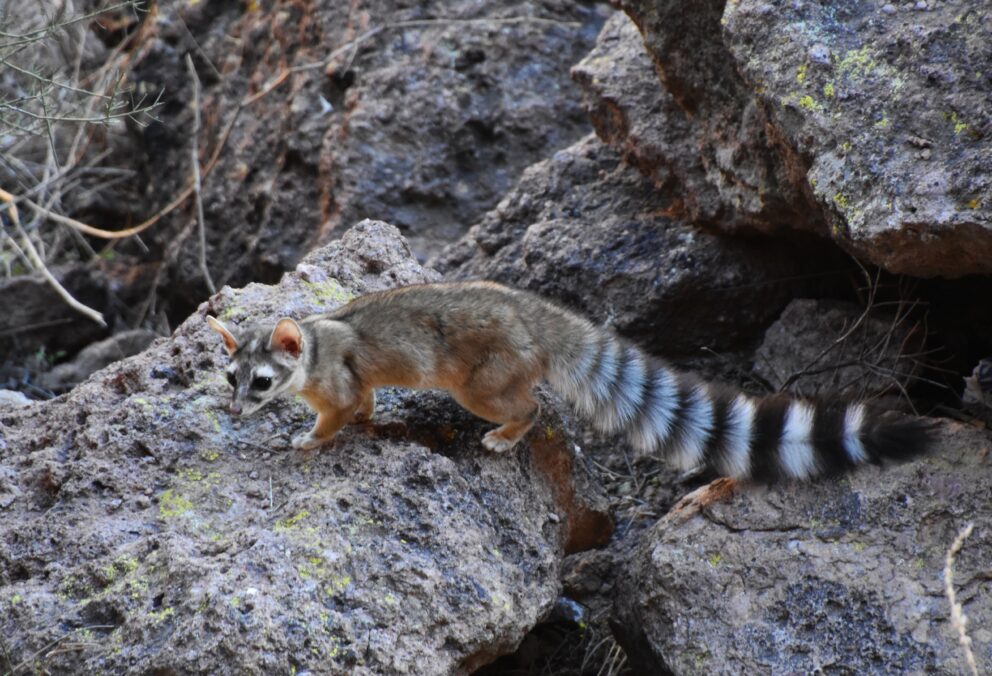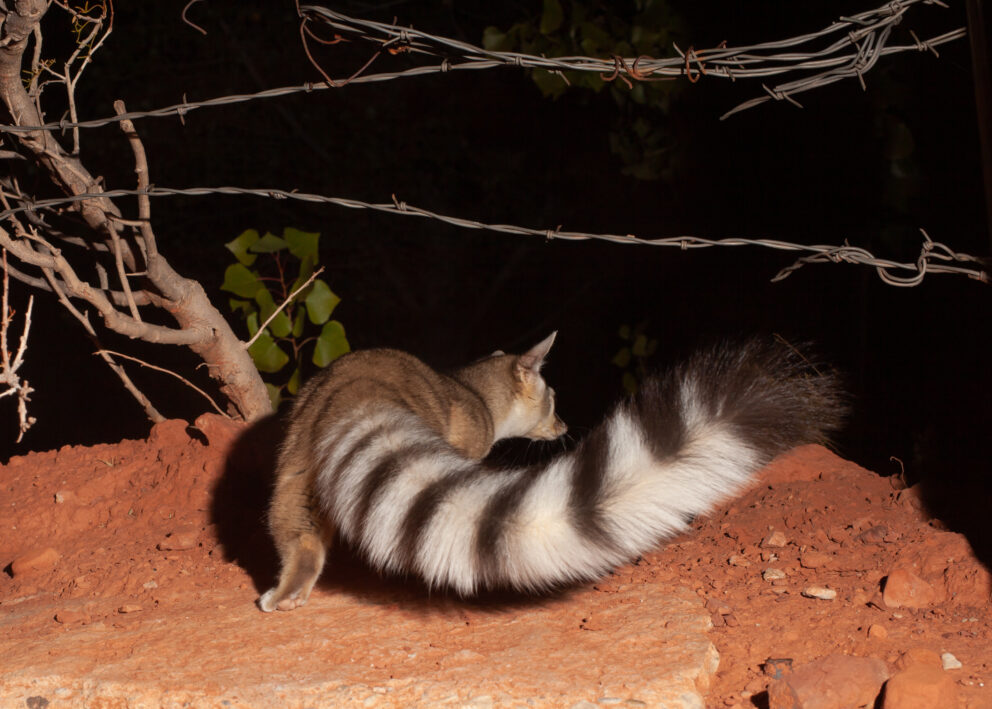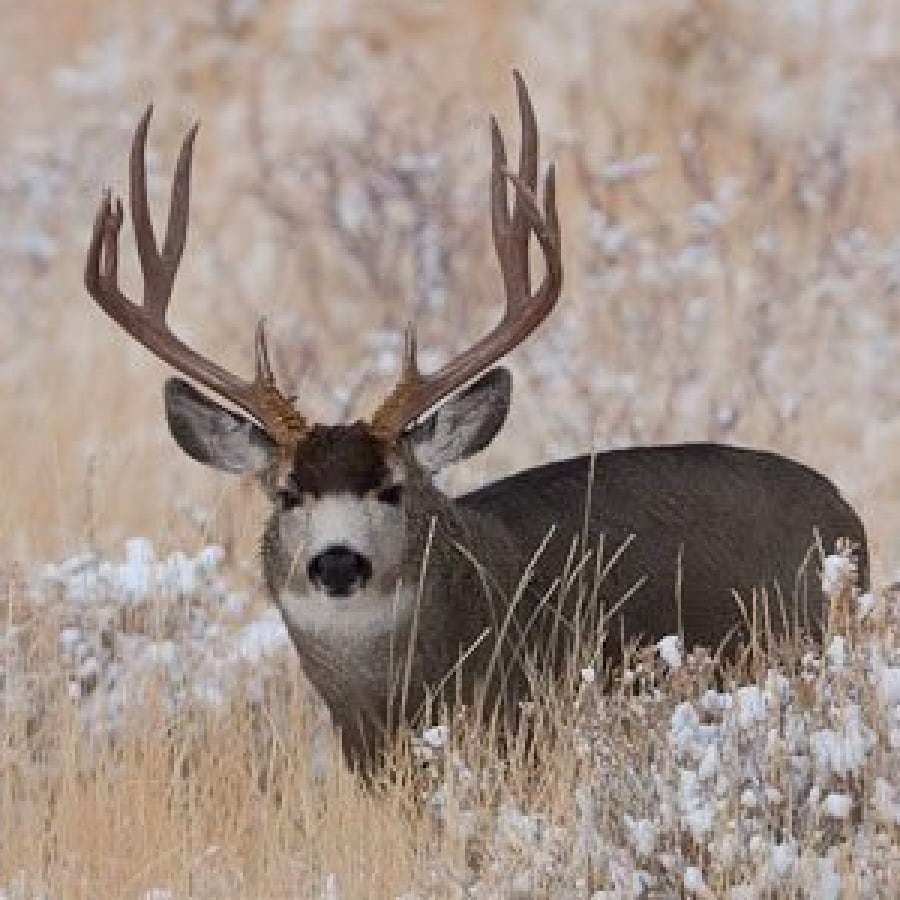- SCIENTIFIC NAME
- Bassariscus astutus
- CLASSIFICATION
- Mammal
- LIFE SPAN
- 6-9 Years
- SIZE
- 20-24” | 1.5-2.5lbs
- STATE CONSERVATION STATUS
-
- Unprotected
- FEDERAL CONSERVATION STATUS
- Least Concern
- GAME STATUS
- Game
- GAME TYPE
- Furbearer
- Washoe
- Humboldt
- Pershing
- Churchill
- Mineral
- Lyon
- Douglas
- Carson City
- Storey
- Elko
- Lander
- Eureka
- White Pine
- Esmeralda
- Nye
- Lincoln
- Clark
Habitat & Range
Ringtail are common in the southwestern portions of the United States and Mexico. In Nevada, they are found mostly in the southern parts of the state with small portions stretching up into the east and west.
- Caves
- Cliffs and Canyons
- Warm desert riparian
Threats
- Habitat Fragmentation
- Habitat Loss
- Urban Development
Natural History
Commonly referred to as the Ringtail Cat, the Ringtail is not a cat at all, it is actually in the raccoon family. They are very elusive and are rarely seen during the day as they are nocturnal, meaning they are most active at night. They live in rocky habitats with lots of caves for them to escape to and they are excellent climbers. Like raccoons, Ringtails are omnivores and will eat just about anything, but they prefer fruit, small lizards, rodents and insects. Ringtails breed from February to May and have a litter size ranging from 1-4 offspring.
Fun Facts














